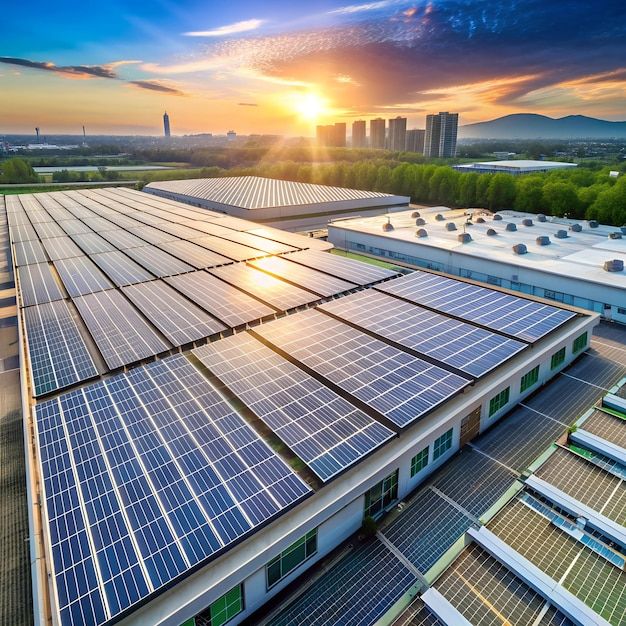As solar energy becomes one of the fastest-growing power sources worldwide, the demand for reliable, high-quality installations has never been greater. A well-installed Commercial solar Lincoln system can deliver decades of efficient, clean power — but achieving that requires strict adherence to industry standards, safety protocols, and technical best practices.
Whether for residential rooftops or large-scale commercial projects, solar installation demands precision, professionalism, and compliance with national electrical and structural codes. This article outlines the essential practices that ensure solar systems are safe, efficient, and built to last.
Understanding the Importance of Standards and Safety
Solar panels may seem simple on the surface — sunlight in, electricity out — but behind every successful system is a complex setup involving electrical wiring, mounting hardware, inverters, and grid connections. Mistakes during installation can lead to reduced performance, electrical hazards, or even fires.
Following established standards ensures that:
-
Systems operate efficiently and safely over time.
-
Installations comply with national and local regulations.
-
Equipment warranties remain valid.
-
Maintenance and inspection are straightforward and predictable.
In short, adhering to best practices protects both the investment and the installer’s reputation.
Key Industry Standards for Solar Installation
Several organizations set the technical and safety guidelines for solar energy systems. These standards define how systems should be designed, installed, and maintained.
-
IEC Standards (International Electrotechnical Commission)
-
Govern the safety, performance, and testing of photovoltaic (PV) modules and components.
-
Key documents include IEC 61215 (performance testing) and IEC 61730 (safety requirements).
-
-
IEEE and NEC (National Electrical Code)
-
The NEC provides detailed electrical requirements for PV systems, covering wiring, grounding, and overcurrent protection.
-
IEEE standards ensure safe grid interconnection and system reliability.
-
-
UL Certification (Underwriters Laboratories)
-
Ensures that solar components, including panels, inverters, and mounting systems, meet recognized safety standards.
-
-
Local Building Codes and Permitting
-
Municipal authorities often require permits and inspections to verify structural integrity and fire safety before activation.
-
Compliance with these standards not only guarantees safety but also qualifies systems for incentives and utility approval.
Best Practices for Safe and Efficient Installation
1. Conduct a Thorough Site Assessment
Before installation, evaluate the site for shading, roof condition, structural load capacity, and electrical infrastructure. A detailed site audit ensures that panels are placed for optimal performance and long-term safety.
2. Use Certified Equipment
Always choose components that are UL-listed or meet IEC standards. Using uncertified products risks safety issues, voided warranties, and regulatory noncompliance.
3. Secure Mounting and Structural Integrity
The mounting system is the backbone of any solar setup. Ensure it is properly anchored to the structure, resistant to corrosion, and designed to withstand local wind and snow loads. For rooftop systems, maintain watertight seals to prevent leaks.
4. Electrical Safety and Grounding
Proper grounding prevents electric shock and system faults. Installers should use appropriately rated fuses, breakers, and disconnects, and ensure that all wiring is adequately insulated and protected from weather exposure.
5. Follow Correct Wiring Practices
PV wiring must comply with NEC standards for conductor sizing, color coding, and conduit placement. Loose or exposed connections can lead to overheating or system inefficiency.
6. Inverter and Battery Installation
Inverters and energy storage units should be mounted in well-ventilated areas, away from moisture or extreme temperatures. Ensure proper labeling, wiring protection, and surge suppression to prevent damage.
7. Fire and Emergency Safety
Solar arrays must include clearly labeled disconnect switches accessible to firefighters or maintenance personnel. Follow local fire codes for rooftop spacing and access pathways.
8. Testing and Commissioning
Before activation, conduct voltage and continuity tests to confirm all electrical connections are secure. Use commissioning checklists to verify system performance, safety compliance, and inverter functionality.
9. Documentation and Maintenance Planning
Provide system owners with manuals, wiring diagrams, and performance data. Encourage periodic inspections, particularly after severe weather, to ensure continued safety and efficiency.
Training and Certification for Installers
Professional solar installation requires more than technical skill — it requires certified expertise. Reputable installers often hold credentials from organizations such as:
-
NABCEP (North American Board of Certified Energy Practitioners) – a gold standard in solar certification.
-
RECC (Renewable Energy Consumer Code) or MCS (Microgeneration Certification Scheme) in the UK.
These programs ensure that technicians understand both technical and regulatory requirements, guaranteeing quality installations. Regular training also helps installers stay updated on evolving technologies like smart inverters and battery integration.
Common Safety Hazards and How to Avoid Them
Electrical Hazards: Always de-energize circuits before working and use appropriate PPE (Personal Protective Equipment).
Fall Risks: Installers working on rooftops should use harnesses, guardrails, or scaffolding to prevent accidents.
Fire Risks: Poor wiring or faulty connections can create hotspots. Ensuring clean terminations and using flame-resistant materials reduces risk.
Weather and Environmental Factors: Installations must withstand heat, wind, and moisture exposure. Use corrosion-resistant materials and ensure components are rated for the local environment.
Quality Assurance and Ongoing Inspections
Once a solar system is operational, continuous monitoring ensures that it performs safely and efficiently. Quality assurance involves:
-
Annual inspections to check mounts, wiring, and panel cleanliness.
-
Monitoring software to track real-time energy production.
-
Prompt replacement of worn or damaged components.
Regular maintenance and adherence to warranty conditions extend the system’s lifespan and protect the investment.


